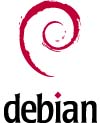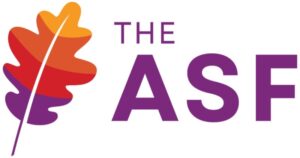Yesterday, the Fedora Project released Fedora 21, and with it the tech media got on its proverbial horse and started reports and reviews of the latest release. While it’s a good release and we won’t be reviewing it here — I already gave it a shakedown during the alpha and found it to be fantastic and completely worth the wait — there’s one thing that’s missing from Fedora 21 that I find rather disheartening.
Namely, Fedora 21 is missing a release name.
It’s quirky, perhaps, but release names are a favorite item of mine in the FOSS realm. While completely useless in the scope of the software itself, it does actually reflect a degree of creativity within the respective communities. Depending on the how it’s done, the decision process ranges from a spirited event to a tried-and-true yawner.
 Until Fedora 21, the Fedora Project used to have a process for release names in which knock-down drag-out brawls would break out, rhetorically speaking, in the debate and community-wide voting for the name. Arguably, Fedora 17 “Beefy Miracle” wobbled the process from the rails, and while the rest of the names were noble — my favorite was Fedora 19 “Schrodinger’s Cat” — the formula was fairly simple: Names had to meet a “is-a” test. For example, “Schnozz is a ____, and so is Keister.” Taking the example of naming Fedora 14 “Laughlin,” the Fedora Project took the name of Fedora 13 “Goddard” and, though the miracle of the “is-a” test, had a list of candidates, of which Laughlin won. So the formula is as follows: “Robert H. Goddard was a professor of physics, and so was Robert Laughlin.” To see this in action, you can look at the Fedora Release Name History.
Until Fedora 21, the Fedora Project used to have a process for release names in which knock-down drag-out brawls would break out, rhetorically speaking, in the debate and community-wide voting for the name. Arguably, Fedora 17 “Beefy Miracle” wobbled the process from the rails, and while the rest of the names were noble — my favorite was Fedora 19 “Schrodinger’s Cat” — the formula was fairly simple: Names had to meet a “is-a” test. For example, “Schnozz is a ____, and so is Keister.” Taking the example of naming Fedora 14 “Laughlin,” the Fedora Project took the name of Fedora 13 “Goddard” and, though the miracle of the “is-a” test, had a list of candidates, of which Laughlin won. So the formula is as follows: “Robert H. Goddard was a professor of physics, and so was Robert Laughlin.” To see this in action, you can look at the Fedora Release Name History.
This, of course, flies in the face of the Ubuntu release-name process, handed down from on high from Mark Shuttleworth with absolutely no input from the Ubuntu community. Seemingly, after white smoke is seen coming from a chimney somewhere on the Isle of Man, the decree is made and a release name with an adjective and an animal starting with the same letter is presented to the Ubuntu community.
 Yawn.
Yawn.
Linux Mint, which also had a fantastic release last week and is garnering glowing praise in the tech media, has a release name convention that is a little more interesting, albeit also chosen by the lead developer, Clement Lefebvre. The naming convention here is a woman’s name, in alphabetical order, ending with the letter “a”. They’re now at “R” with “Rebecca.” Years ago I asked Lefebvre what he was going to do when he reached “Zelda,” or whatever the “Z” name was going to be. His solution is simple: start at “A” once again and this time end the woman’s name with “e”.
Well played, Clem.
“Toy Story” is responsible for the Debian release names, and with it a couple of related spinoffs in the naming convention department from other distros. Debian release names are based on characters from the Pixar film — with such classics as Woody (Debian 3.0) and Sarge (Debian 3.1) and the last two being Squeeze and Wheezy — and the soon-to-be-released Debian 8.0 is Jessie, named after the cowgirl doll in the series of films.
 [As an aside, here’s the distro’s explanation regarding why Debian Unstable is called Sid: “As with all Debian release names thus far, the Sid distribution takes its name from a Toy Story character. Sid is the kid next door who breaks his toys and makes nasty creatures of them. It is sometimes wrongly backronymed as ‘Still In Development’. While other release code names progress in time from being testing to being stable, Sid is forever doomed to being unstable.”]
[As an aside, here’s the distro’s explanation regarding why Debian Unstable is called Sid: “As with all Debian release names thus far, the Sid distribution takes its name from a Toy Story character. Sid is the kid next door who breaks his toys and makes nasty creatures of them. It is sometimes wrongly backronymed as ‘Still In Development’. While other release code names progress in time from being testing to being stable, Sid is forever doomed to being unstable.”]
Joined at the hip to Debian, CrunchBang — a distro based on Debian with the Openbox window manager — takes a page from the Debian playbook when it comes to release names. However, because lead developer Philip Newborough is a “Muppet Show” fan, the CrunchBang release names are Muppets starting with the same letter as the Debian release name. So CrunchBang 10, based on Debian 6 “Squeeze,” was named “Statler” (one of the old guys in the balcony), and CrunchBang 11, based on “Wheezy,” is named “Waldorf” (the other old guy). CrunchBang 12, based on “Jessie,” will be named “Janice,” the guitar player in the Muppet band.
Like Debian and CrunchBang, Korora — an Australian distro based on Fedora — bases its release names on another animated film, this one “Finding Nemo.” The latest release, Korora 20, is “Peach,” named after the starfish in the film, and “Nemo” has been a past release name. The release name for Korora 21, which should be out sometime around Christmas, has not been chosen yet.
There are others, and if you have a favorite, mention it below in the comments section.







UPDATE: The Korora 21 release name will be either Sheldon — the seahorse who is H2O intolerant — or Darla, the niece of the dentist in “Finding Nemo.”
Thanks for the research, Larry. I had seen the names, but hadn’t put much brain power into where they had come from, so you have satisfied a curiosity I didn’t know I had.
Have a great weekend.
Ed
One thing that’s nice about release names is that it makes troubleshooting for that particular version really easy. Instead of getting 1,000,000s of search results when searching ubuntu 14.XX “My problem” or whatever, you get a much smaller pool of results with Hardy Heron “My problem”